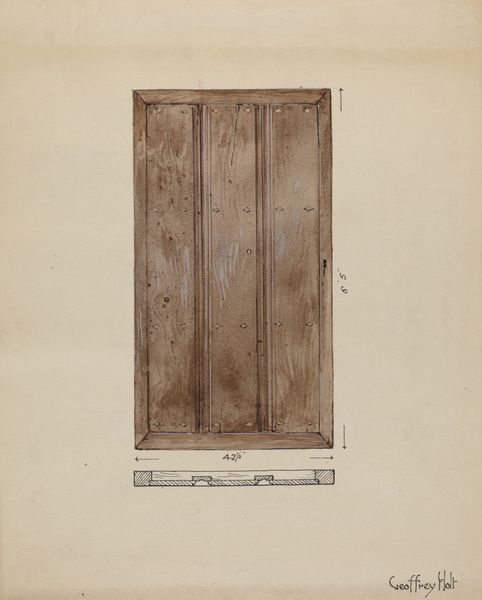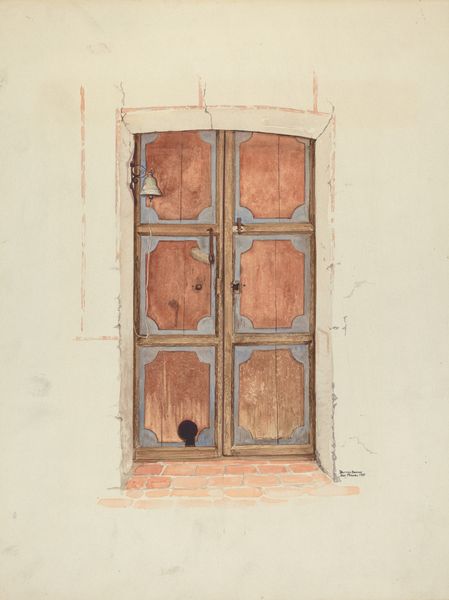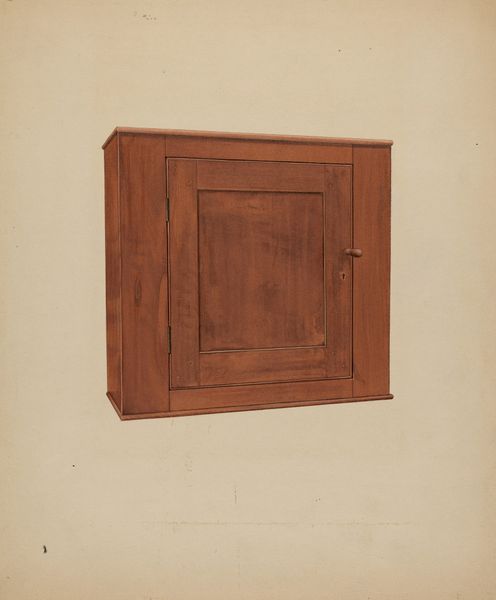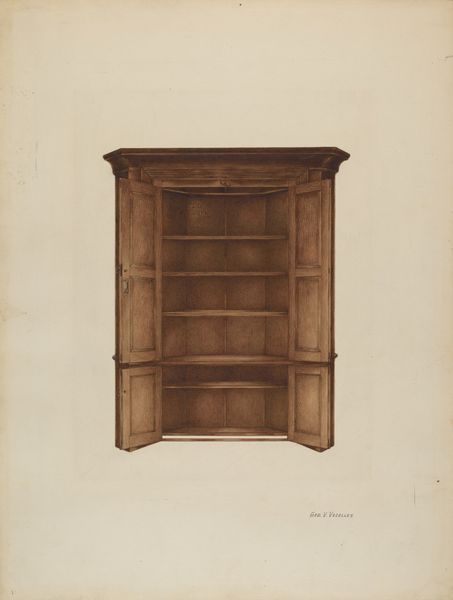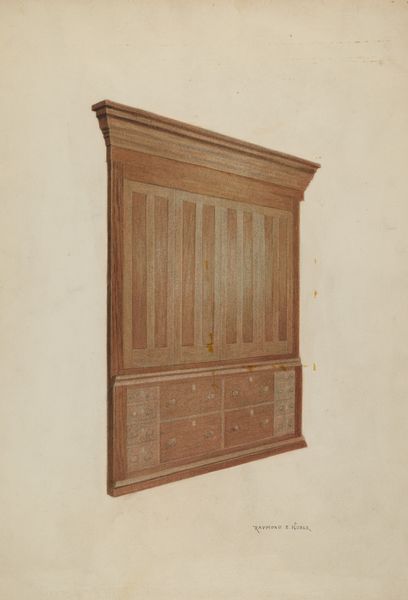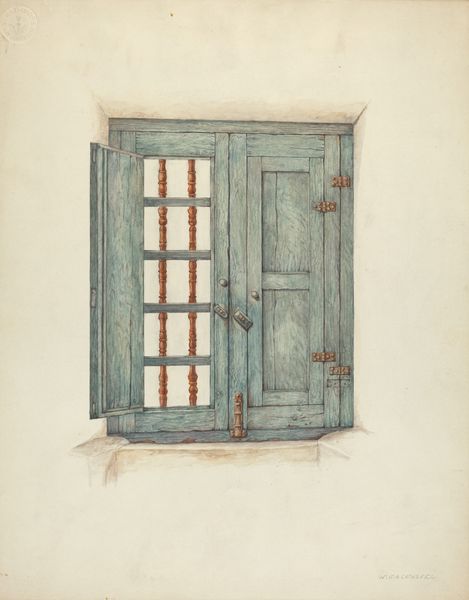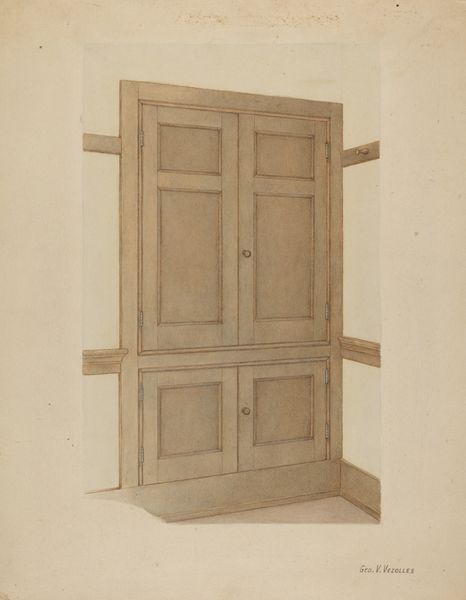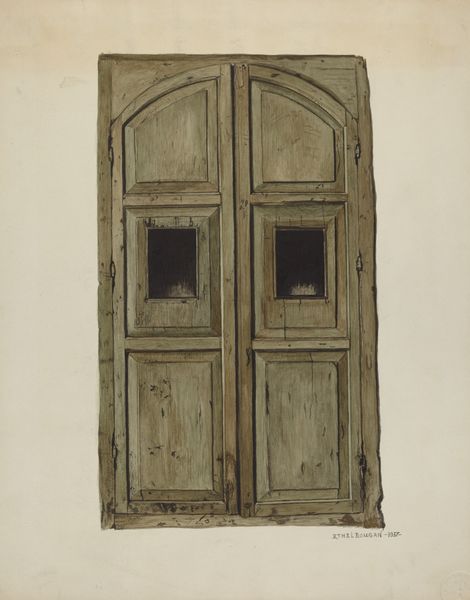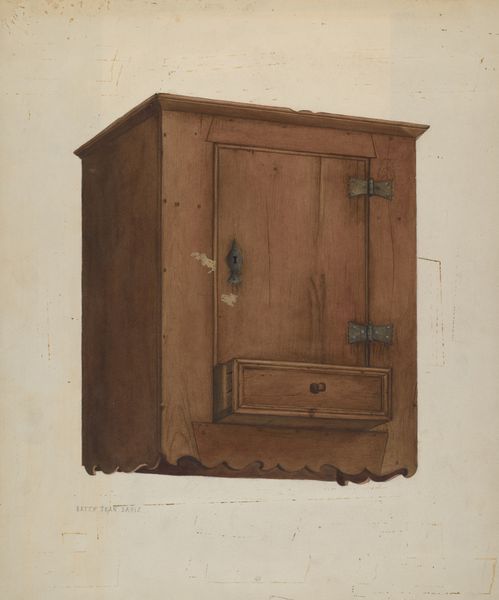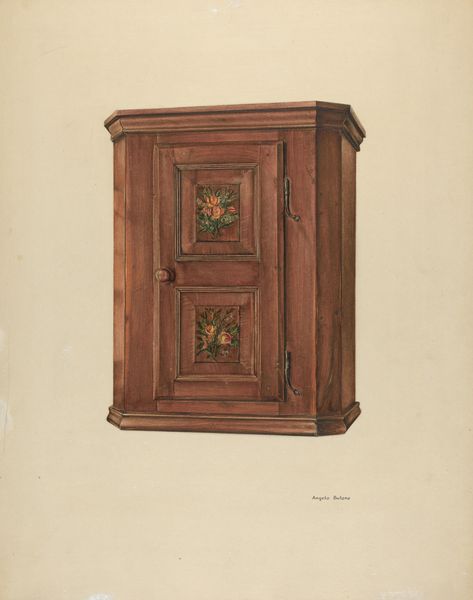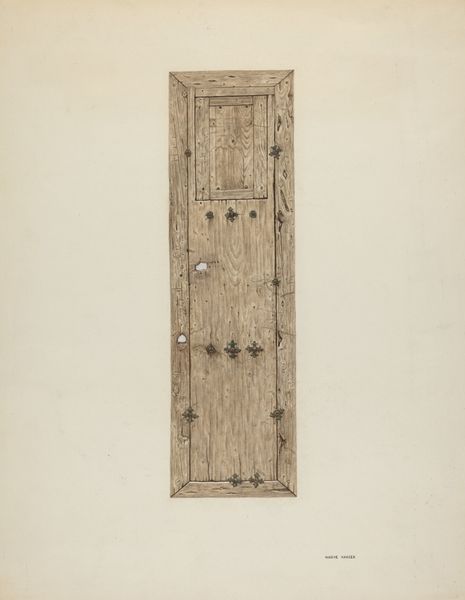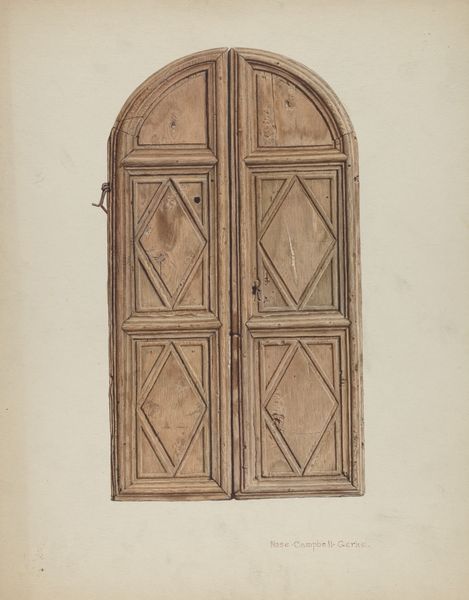
drawing, watercolor
#
drawing
#
watercolor
#
watercolor
#
realism
Dimensions: overall: 35.6 x 27.9 cm (14 x 11 in.) Original IAD Object: 8'6 3/4" high; 6'5"wide; 3 7/8"thick
Copyright: National Gallery of Art: CC0 1.0
Curator: Ethel Dougan’s watercolor and drawing titled “Sacristy Door at Mission San Juan Bautista,” created in 1938, offers a compelling look at a specific architectural feature. Editor: It's incredibly static, isn't it? A very frontal and balanced composition—the symmetry of the doors practically screams stability. But also, a little austere? Curator: Absolutely. We must consider that such doors symbolized entry into sacred space, typically constructed by indigenous labor under colonial direction. These heavy, paneled doors suggest enclosure and controlled access—physical embodiments of institutional power and material exploitation. Editor: I agree. The lines of the woodwork create a visual rhythm, but the somber color palette, almost monochrome, creates a muted and serious effect. It's like a study in brown, subtly highlighting the grain of the wood. The artist certainly drew attention to the linear qualities, and also to texture with their shading. Curator: Considering its original purpose to protect and control liturgical implements, that heaviness and restriction makes complete sense. I mean, doors themselves represent thresholds, liminal spaces for passing between the secular and the sacred, so to me it reads as a metaphor of labor and access, very consciously presented. The artist directs us to understand that tension. Editor: That's a very good point! The perspective—slightly skewed—it isn’t quite perfectly head-on which introduces just a tiny bit of instability. Curator: Perhaps indicating the instability that exists beneath the apparent solidity? We also need to consider that this rendering happened almost a century after the establishment of the missions, reflecting evolving attitudes toward colonial legacy in California. What do we make of it, viewed from the present day? Editor: From a purely compositional point, Dougan has focused sharply on details—the aging of the wood, the simple bolt and hinges—making a lasting comment on history as object. Curator: Yes, it truly emphasizes material and making. A record of hands and cultural legacy, and a striking visual statement that continues to open to new interpretations today. Editor: It really is an invitation to appreciate structure and how a plain motif like a simple door may generate multiple layers of thought.
Comments
No comments
Be the first to comment and join the conversation on the ultimate creative platform.

